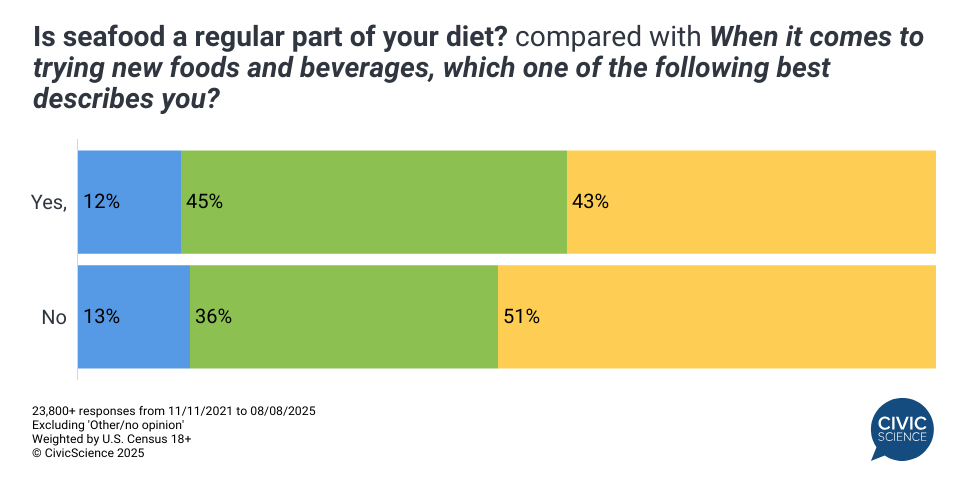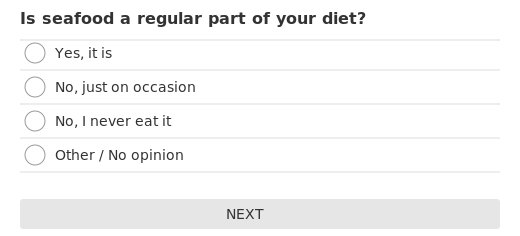From sushi rolls to shrimp scampi, seafood offers a wide range of flavors and traditions—but not everyone is on board. A New CivicScience poll of more than 34,000 U.S. adults finds that just 35% say they eat seafood regularly, while the majority either eat it only on occasion or not at all (excluding no opinion). Those preferences appear to ripple far beyond the dinner table, influencing how people cook, shop, and engage with food overall.
Generational patterns challenge assumptions. Younger adults are the least likely to eat seafood regularly—just 25% of those ages 18-29 do—while interest grows steadily with age: 27% for ages 30-44, 37% for ages 45-64, and 43% for those 65+. The trend hints at a taste for seafood that develops over time, potentially fueled by evolving palates, greater disposable income, or increased health consciousness.
Work life plays a surprising role. In-person workers are far more likely to eat seafood regularly (41%) than remote workers (14%), with hybrid workers in the middle (24%). This nearly threefold difference may reflect factors like income, access to fresh seafood, or the broader lifestyle differences between work arrangements.
Generational patterns challenge assumptions. Younger adults are the least likely to eat seafood regularly—just 25% of those ages 18-29 do—while interest grows steadily with age: 27% for ages 30-44, 37% for ages 45-64, and 43% for those 65+. The trend hints at a taste for seafood that develops over time, potentially fueled by evolving palates, greater disposable income, or increased health consciousness.
Work life plays a surprising role. In-person workers are far more likely to eat seafood regularly (41%) than remote workers (14%), with hybrid workers in the middle (24%). This nearly threefold difference may reflect factors like income, access to fresh seafood, or the broader lifestyle differences between work arrangements.
Seafood eaters stand out in the kitchen and beyond:
-
More engaged home cooks: 84% of seafood consumers enjoy cooking, compared to 74% of those who avoid it—perhaps due to seafood’s reputation for requiring skill and confidence.
-
Bigger champions of local sourcing: 73% frequently buy locally grown food, versus 55% of non-seafood eaters, pointing to a deeper commitment to freshness and quality.
-
More adventurous with food: 45% keep up with new food trends, compared to 36% of non-seafood eaters. In contrast, 51% of seafood avoiders prefer sticking to familiar foods (vs. 43% of seafood eaters).
-
Less swayed by social media: Just 25% say online food trends influence their purchases, compared to 30% of seafood avoiders, suggesting their choices are driven more by personal experience.



